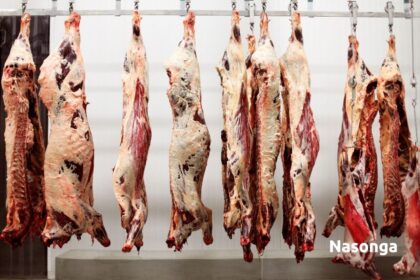Do you want to find and buy cheap wholesale products to resell in Kenya? Here’s how.
The first thing you need is a list of suppliers where you can stock up on your product for cheap. The next step would be to visit the supplier and negotiate the best deal.
You should also make sure that they are legit and have good reviews so that there are no surprises later on when it comes time to ship them out of the country.
If this sounds like something you’re interested in, follow these six steps, and soon enough, you’ll be able to start turning a profit!
If you’re interested in finding and buying wholesale products to resell in Kenya, there are six steps I can offer that will help make it a reality.
How to find cheap wholesale products to resell in Kenya
Step One: Find Suppliers
Don’t worry about sourcing if you don’t have any interest in importing goods from overseas or buying directly from a manufacturer’s agent or distributor.
However, if you want to start an import business, you will need to find suppliers of the desired items.
For example, if you are looking for clothes and accessories, you will need to find a supplier specializing in this sector.
There are plenty of wholesale options within Kenya that offer you competitive prices.
You can find suppliers of wholesale products in Kenya by word of mouth, through social media, and by using websites like Alibaba. Here are some places to look for that kind of deal:
- Kamukunji in Nairobi
- AliExpress
- Alibaba.com
- Straight from the factory
- River road
Step Two: Negotiate
We often see that customers are hesitant to negotiate prices with suppliers because they are afraid of offending them and risking the relationship.
Read also, Top 10 Booming Businesses in Kenya.
However, if this is your first time buying wholesale products for resale, you should remember that the supplier will be asking you for a minimum order.
The two key tips to remember when negotiating the price with a supplier are bringing someone who speaks their language and knows how much you’re willing to pay upfront.
Step Three: Order Products
Once you’ve done all of this preliminary work, it’s time to order products from your supplier!
We recommend you order around three months in advance because suppliers often need at least four weeks to process orders before they ship them.
Step Four: Prepare for Shipping (Transport & Logistics)
Now that you have your product, it’s time to prepare for shipping! This includes packing items neatly in boxes, finding a way to ship them, and getting quotes from different companies.
What’s important here is that you Insure the items in case they get damaged or lost during shipment.
Another thing to note is whether there are any import taxes on products sourced from overseas. Import taxes can change depending on the country’s laws for the product being sourced.
You should also know when the goods will be delivered and how they need to be unpacked.
How you handle this will depend on whether the products are already in retail packaging. If the product is in retail packaging, it needs to be repacked.
If the product isn’t in retail packaging, then it won’t need any repacking, but you will still need to work on identifying the shipping costs.
You should also know when the goods will be delivered and how they need to be unpacked.
Step Five: Get Paid
When you have procured your products, it’s time to get paid! Make sure that your supplier has a system for making digital payments. Then, print out your documents and prepare for the transfer of funds.
You may also like Profitable Business Ideas in Kenya.
Now that you’ve prepared for shipping and built the store, it’s time to collect money from those customers who ordered!
Your team can connect with their payment service of choice (Mpesa Paybill at the moment, but we will add more as needed) to collect the funds. This means you can sell wherever your customers want to pay: on Facebook, from a link, or an e-mail.
We strongly recommend having all documents signed and ready for funds transfer before your customers place their orders. This will save you time and effort and provide a smooth process for both parties.
Step Six: Ship It
By now, you’ve sold and ordered your products from your supplier. But that still doesn’t mean they are in consumers’ hands!
It would be best to make sure those products have been shipped out of your warehousing facility (or freight forwarder’s warehouse).
Ensure you have all your documents, including tracking information, so that the deliveries can be tracked.
Step Seven: Get Feedback
It’s important to get feedback about how your service was for consumers on eCommerce! Tell them about your shop and make it easy to give their feedback through ratings and reviews.
Also, read; Top 12 Businesses to Start With 20K in Kenya
Additionally, you can post more about your business on Facebook and Twitter to help increase the visibility of your business.
This will help you build a strong customer base. It better understands what people want from you and enables you to find new growth opportunities.
Step Eight: Repeat
By following these steps on cheap wholesale products to resell in Kenya, you’ll be able to grow your e-commerce store and keep it profitable for each product. How to find cheap wholesale products to resell in Kenya













